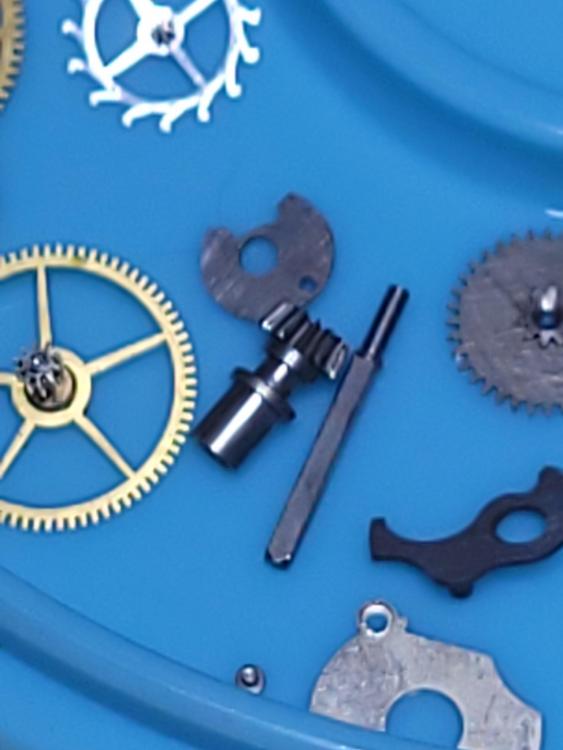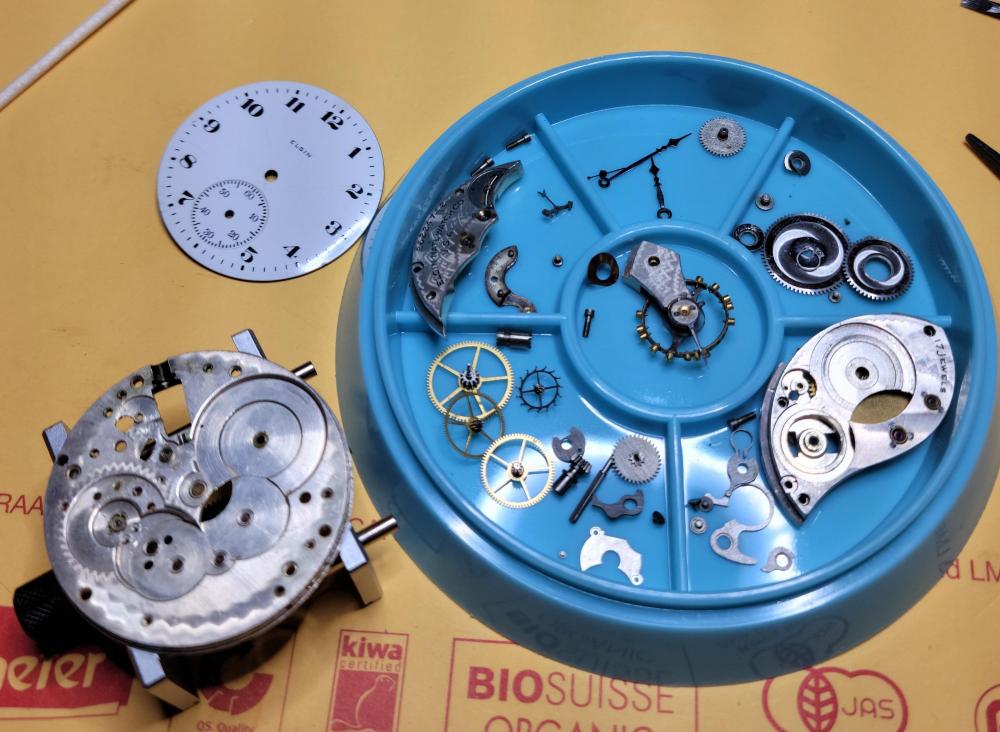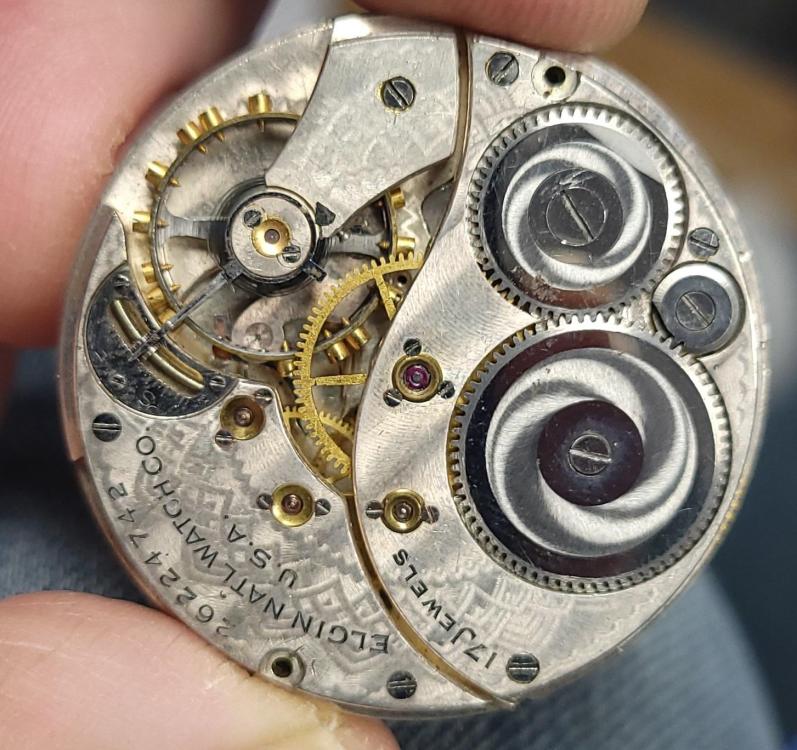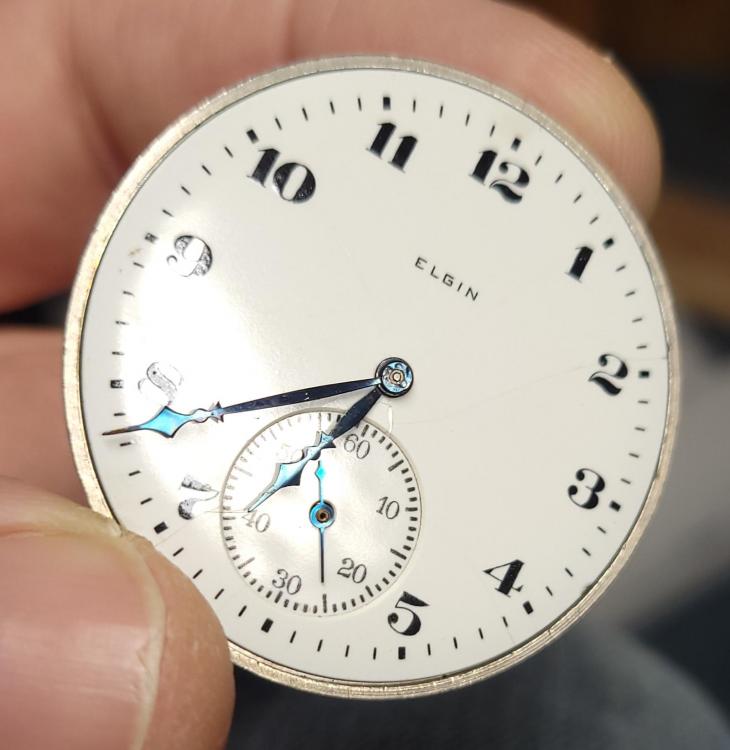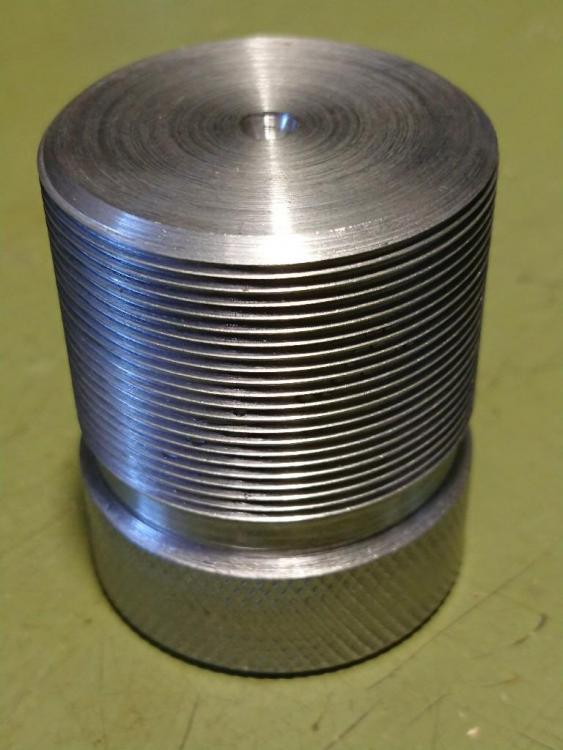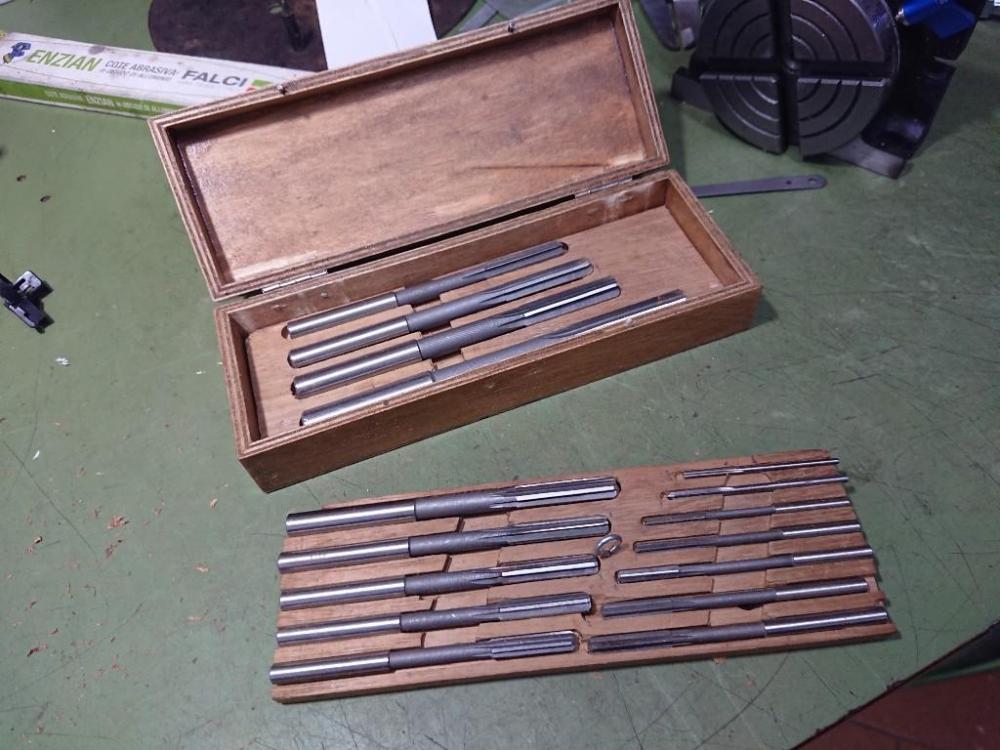Leaderboard
Popular Content
Showing content with the highest reputation on 01/01/22 in all areas
-
You might have accidentally touched the fork and stopped it. Try tapping the movement lightly at the 3 o'clock or 9 o'clock position to start it again.2 points
-
Hi JohnC there is no substitute for hands on. Continue the good work wish you well.2 points
-
Got this guy off eBay to practice on before moving on to cleaning and lubricating a nice Elgin pocketwatch I have. Thought I'd share my progress. I got the hands off without issue, then dressed up my screwdrivers and loosened the dial retaining screws. Two of them backed out no problem, and one just spun in place. I decided to take the movement apart from the back and see what I could do. It didn't come with a crown attached, so I carefully let down the mainspring by holding the winding wheel with pegwood and pushing the click aside. After that, disassembly was uneventful, other than everything being positively caked with crud. Every screw thread was totally gummed up. Also, thank you to the YouTube creators out there, without whom I'd never have known the crown wheel screw was reverse-threaded, and probably would have snapped it off. Finally, I was able to sneak the tip of an X-Acto knife into the hole for the last dial foot and ease it back out, when the dial kindly fell off for me. And here's where I'm at. Next is closer inspection and cleaning. I have a 10x loupe, but it's inexpensive and I'm currently trying to decide between a couple of nice watchmaker's loupes, a stereo microscope, or a video microscope. Maybe a demagnetizer, too. I have one of those square ones that you pull the tools through, but I cannot for the life of me demagnetize my tweezers. I mostly used the carbon fiber tipped ones and pegwood to move things around. It also looks like I'm going to need a new stem and crown if I'm going to wind it up and test my work when it's done. Looking forward to that!1 point
-
Watch screws are made with dies or plates, however threading even M1.6 should be possible. And even if you thread with dies and taps on the lathe with holder and guide respectively you would be very facilitated because the work and tool is held precisely. With a vertical slide attachment you can do limited milling on the lathe, like small brass or aluminium parts. It's cumbersome but a good compromise before committing to a milling machine. Some people does everything that way, I call them lathing diehards.1 point
-
Queen (sp ?) is a must watch, always funny and resourceful.. I think she explains that in the video, but in any case the reason why one takes the mouthful of a setup above is that small machines have not enough torque to cut at slow rotation below 250 rpm (can be remedied, but that's a whole different story). So you need to spin faster, which means you can't stop them fast (there is no brake either), reason for which you need a "runout lane" cutting toward the tailstock.1 point
-
Spindle spider part 1 I want to make an headstock spider, that is something that supports a long piece of stock at the back of the spindle. In my case M39 x 1.25 female threading is needed to mount it. I completely botched the first to two attempts, which motivated me to study more about thread geometry. The problem is that on a female threading is very difficult to judge when the cut "is enough" without a reference, and the work can't be removed from the chuck to try it on the back of the spindle. So I started by cutting a test screw. Fortunately it came good at the first try. I have it turned "YouTube mini-lathe videos", that is compound at 29 deg on the left, motor in reverse, cutter upside down and cutting toward the tailstock. On top of the recipe I added a live center due to the long overhang. Fortunately I could try the spindle nut on it, that was a save because math says 0.77mm depth of cut, but at 0.70 on the dial test indicator it was already fitting just fine. And my eye was telling me that It was about right anyway.1 point
-
Before going there, try the old gentle way. Make strong tea and leave in it a day.1 point
-
I like the way you think. High heat, WD40 and an expensive watch, what could go wrong? Thanks again mate!1 point
-
Heat it till you start to worry that you might be holding it there too long The clutch is a pretty small part, so it should heat up pretty quickly. Most soldering irons heat up to somewhere in the 200C to 400C range, and the clutch will hit that sort of temperature pretty quickly (maybe in 5 to 10 seconds). This is hot enough to melt solder, but no where near hot enough to melt brass or steel, so your watch parts are perfectly safe at this sort of temperature. It will however give all the gunk in the clutch and on the stem a good grilling, and you may even see a small whiff of smoke. If you hold the heat there too long, then the main plate will start to heat up and you risk grilling your fingertips if you are unwise enough to be holding the thing with your fingers while heating it (which is almost certainly the sort of daft thing I would do). One other tip. Clean the hot soldering iron tip carefully with a piece of wet tissue paper or the tip sponge if your iron has one. This will avoid you transferring solder or other junk on to the work piece (the clutch, stem, crown etc). BTW Hot WD40 makes an interesting smell.1 point
-
When I started to learn Television was not available to the masses and the books were hard to locate and expensive too, and living in the sticks didnt help. So it was a case if you want to learn do what you could from the books you could find in the second hand bookshops. The problen with formalised training is that you follow the trend and to some degree stifles origional thaught. In other words you become intitutionalised and think like your teachers. You do it that way because thats how you were taught even though there may be otherways of doing it . There are out there some watchmakers who were apprenticed and learned practicaly , who are capeable of thinking out side the box and are brilliant at what they do. So in essence I am with jdm on this one. I have seen people with letters after their name I wouldnt let work on a pram, they know the theory but because they think in a straight line It takes a long time before they have worked through the theory by that time you have fixed it. JohnC If you are serious in following the dream, head down and focus all the training and titles will not make you a Great watchmaker/restorer determination and skill will do the job. I wish you all the best in your endeavour.1 point
-
1 point
-
Welcome Kourosh, enjoy the forum. My horological journey started with clocks and I found it is a never ending learning curve. Enjoy, lots of knowledge here to help if needed.1 point
-
1 point
-
1 point
-
Thank you for your introduction and welcome to this friendly forum. We all look forward to your contributions and continued involvement.1 point
-
1 point




